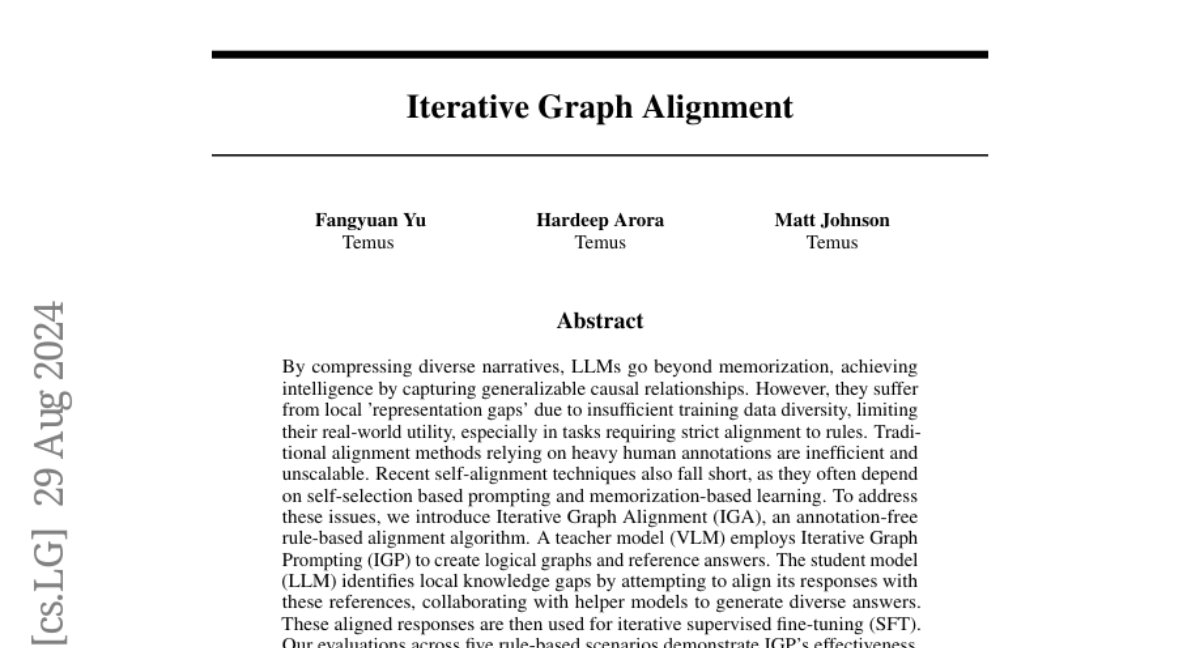Iterative Graph Alignment
Fangyuan Yu, Hardeep Singh Arora, Matt Johnson
2024-09-02

Summary
This paper talks about Iterative Graph Alignment (IGA), a new method for improving how AI models learn and align their responses to specific rules without needing a lot of human input.
What's the problem?
AI models often struggle to understand and apply specific rules because they can have gaps in their knowledge due to limited training data. Traditional methods for aligning AI responses usually require extensive human annotations, which are time-consuming and not scalable. Additionally, recent self-alignment techniques have not been very effective.
What's the solution?
IGA introduces a rule-based alignment algorithm that does not require human annotations. It uses a teacher model to create logical graphs that represent correct answers, while a student model identifies where it lacks knowledge and works to align its responses with these references. This process involves generating diverse answers and refining them through iterative supervised fine-tuning. The results show significant improvements in aligning the AI's responses with the rules it needs to follow.
Why it matters?
This research is important because it provides a more efficient way for AI models to learn and apply rules, making them more useful in real-world applications. By reducing the need for human input, IGA can help develop AI systems that are faster and easier to train, which can be applied in various fields such as education, healthcare, and automated systems.
Abstract
By compressing diverse narratives, LLMs go beyond memorization, achieving intelligence by capturing generalizable causal relationships. However, they suffer from local 'representation gaps' due to insufficient training data diversity, limiting their real-world utility, especially in tasks requiring strict alignment to rules. Traditional alignment methods relying on heavy human annotations are inefficient and unscalable. Recent self-alignment techniques also fall short, as they often depend on self-selection based prompting and memorization-based learning. To address these issues, we introduce Iterative Graph Alignment (IGA), an annotation-free rule-based alignment algorithm. A teacher model (VLM) employs Iterative Graph Prompting (IGP) to create logical graphs and reference answers. The student model (LLM) identifies local knowledge gaps by attempting to align its responses with these references, collaborating with helper models to generate diverse answers. These aligned responses are then used for iterative supervised fine-tuning (SFT). Our evaluations across five rule-based scenarios demonstrate IGP's effectiveness, with a 73.12\% alignment improvement in Claude Sonnet 3.5, and Llama3-8B-Instruct achieving an 86.20\% improvement, outperforming Claude Sonnet 3.5 in rule-based alignment.